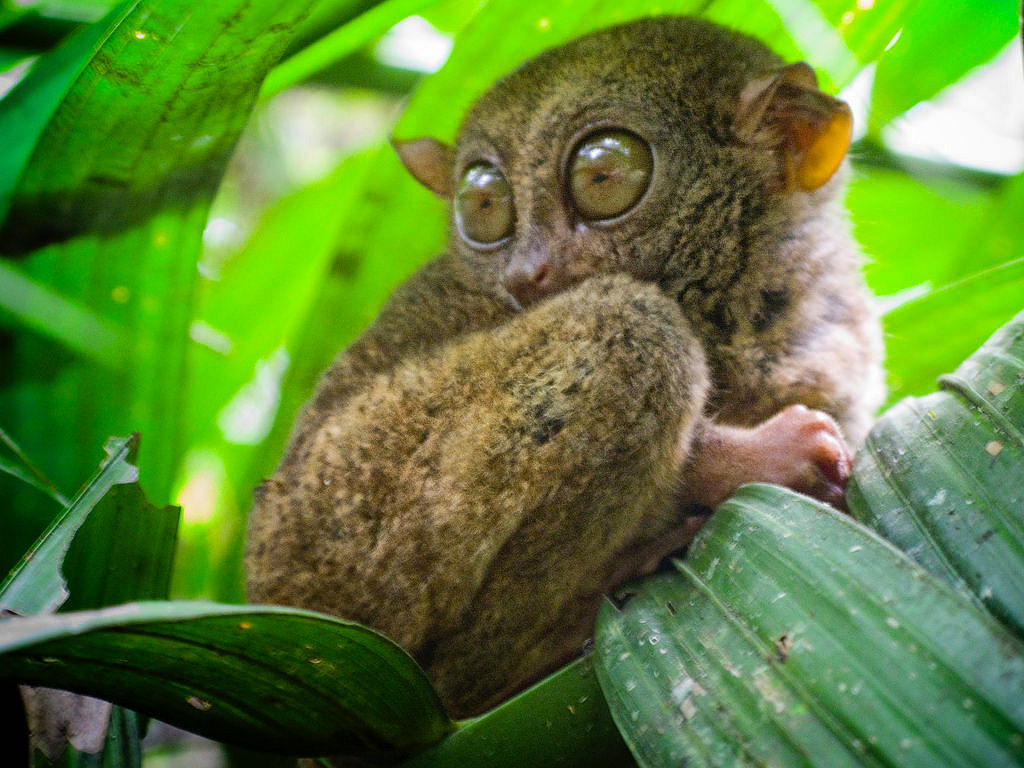Philippine Tarsier and Wildlife Sanctuary Corella Bohol Philippines

Considered one of the world’s smallest primates; the oldest mammal now inhabiting the earth and the oldest surviving member of the primate group, the Philippine Tarsier is endemic to the Philippine islands.
The forests of the Philippines nurture one of the world’s smallest primates.
However, years of rapid forest destruction and poaching have posed a very serious condition to this species. Seventy percent of the country’s original forests have been destroyed. With these forests gone, so will the home of the tarsiers.

In the hills, of Corella, where tarsiers were once abundant, there are only about, 1,000 tarsiers left.
What was once considered common to spot a tarsier by the roadsides has turned into a struggle to save, what remains of this species.
It is feared that the tarsier population is critically declining as their forest habitats frighteningly disappear.
Though the species is not yet threatened with extinction it may become so if appropriate conservation measures are not carried out.
Our conservation program addressed this urgent call to save and protect the Philippine tarsier.
The establishment of a forest reservation on the island of Bohol shall serve as the sanctuary of the Philippine tarsier and the conduct of research on the ecology and biology of the tarsier and its habitat.
We may not be able to completely bring back what was lost, but a lot can be done to save and protect this species from possible extinction.
Key facts About The Tarsier:
Sizes:
length: 3-6 inches
Weight: 3-6 oz.
Tail: 5-11 inches
Breeding:
Season: October-January
Gestation: 6 months
No of young: 1 but well-developed

The Bohol Philippines Tarsier is one of the smallest primates on earth.
Tarsier's Lifestyle:
Habit: Arboreal mostly nocturnal lives in the secondary-growth forest
Diet: Insectivore
Vocalization: Single, loud shrill, and high pitch trill
Lifespan: 20 years in the wild (13 years in captivity)
Related Species:
There are 5 species of tarsier in the genus Tarsius, including the Bornean tarsier, Dian’s tarsier, Pygmy tarsier, Spectral or Eastern tarsier. All belong to the family of Tariidae.
Features of the Philippine Tarsier:
Ears:
A pair of large membranous ears that usually turn in the direction of the sound. It can be twisted, crinkled, or moved in opposite directions when excited.
Eyes:
The Philippine Tarsier has huge eyes with large pupils which are used for good night vision. However, the eyes are immobile in their sockets.
To compensate, the tarsier can rotate its neck and head 180 degrees in both directions.
Digits:
Each digit has nails except for the second and the third. The second and the third have claws for grooming. They have pads on their fingers and toes to help them cling to branches.
Voices:
Tarsiers are less vocal than many other primates
Hindlegs:
A tarsier’s hindlegs are twice as long as its body. They use them to leap from tree to tree.
Map to the Philippine Tarsier and Wildlife Sanctuary Corella Bohol Philippines
https://infobohol.com/philippine-tarsier-and-wildlife-sanctuary/
Comments